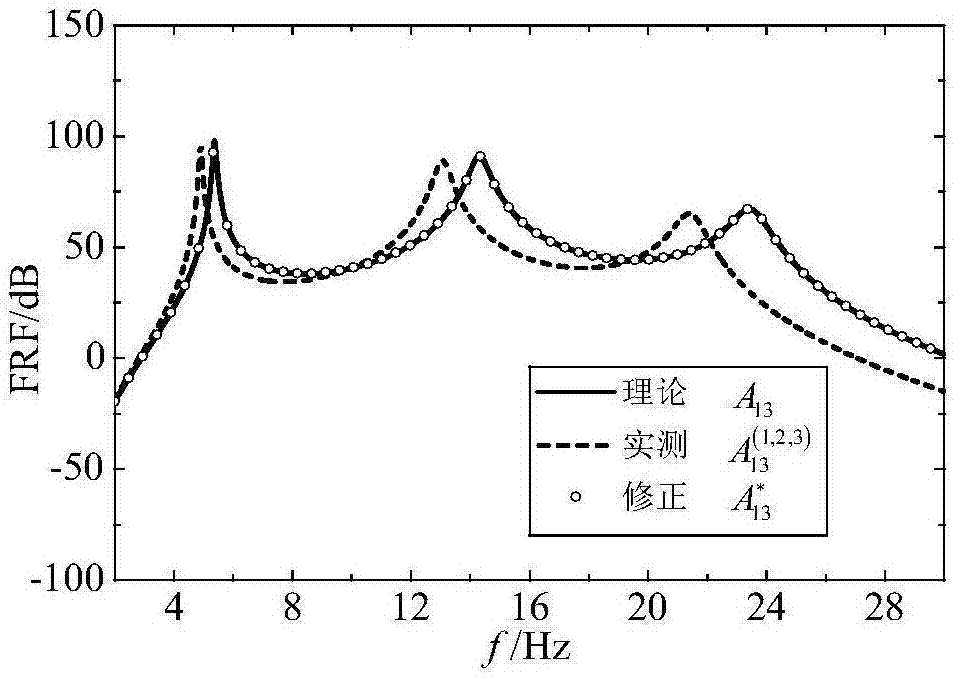Multi-sensor additional mass elimination method in modal test
A technique for additional mass and modal testing, which is used in measuring devices, vibration testing, and testing of machine/structural components, etc., and can solve problems such as changes in the inherent characteristics of structures, changes in structural characteristics, and reduction in the accuracy of modal test results. Eliminate adverse effects, eliminate the effect of measurement errors
- Summary
- Abstract
- Description
- Claims
- Application Information
AI Technical Summary
Problems solved by technology
Method used
Image
Examples
Embodiment
[0048] Embodiment: A multi-sensor additional mass elimination method in a modal test is verified by using a simple three-degree-of-freedom spring-damper-mass system. The parameters of the system are respectively: the quality of the mass block is m 1 = m 2 = m 3 =0.1kg, spring stiffness coefficient k 1 =k 3 =500N / m,k 2 =800N / m, the damping coefficient is c 1 =0.4N·m / s, c 2 =c 3 =0.2N m / s, acceleration sensor mass m a1 = m a2 = m a2 =0.02kg, such as figure 1 shown.
[0049]The specific operation is as follows:
[0050] The additional masses of the 3 acceleration sensors are respectively m i (i=1, 2, ... 3), the layout position nodes are 1, 2, 3 respectively. The frequency response function of excitation at 3 points and measurement at 1 point is denoted as The superscript on the right (1, 2, 3) indicates that the frequency response function includes the influence of the additional mass of the acceleration sensor at points 1, 2, and 3, and the corresponding frequenc...
PUM
 Login to View More
Login to View More Abstract
Description
Claims
Application Information
 Login to View More
Login to View More - R&D
- Intellectual Property
- Life Sciences
- Materials
- Tech Scout
- Unparalleled Data Quality
- Higher Quality Content
- 60% Fewer Hallucinations
Browse by: Latest US Patents, China's latest patents, Technical Efficacy Thesaurus, Application Domain, Technology Topic, Popular Technical Reports.
© 2025 PatSnap. All rights reserved.Legal|Privacy policy|Modern Slavery Act Transparency Statement|Sitemap|About US| Contact US: help@patsnap.com



